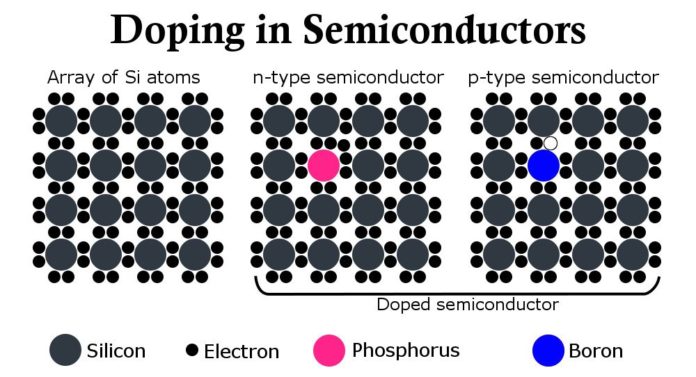Resistivity
According to Ohm’s Law, the electrical resistance of an electronic device is defined as the ratio of the potential difference across the component to the current flowing through the component.
Now using resistance measurement can pose one problem, its value changes as the physical dimension of the resistive material changes.
For instance when a resistive material is increased in length, its resistance value also increases proportionately.
Similarly, when its thickness increased its resistance value decreases proportionately.
The need here is to define a material which may indicate a property of either a conduction or opposition to electrical current regardless of its size, shape or physical appearance.
The magnitude for expressing this particular resistance value is known as Resistivity, which has the symbol ρ, (Rho)
The unit of measurement for resistivity is Ohm-meter (Ω.m ), and it may be understood as a parameter which inverse of conductivity.
In order to get the comparisons between the resistivities of several materials, these are classified into 3 main categories: Conductors, Insulator, and Semi-conductors. The chart below provides the required details:

As you can see in the above figure, there’s a negligible difference across the resistivity of conductors like gold and silver whereas, there may be a significant amount of difference in the resistivity across insulators such as quartz and glass.
This is due to their response to ambient temperature which makes metals hugely efficient conductors than the insulators
Conductors
From the above chart we understand that conductors have the least amount of resistivity, which may be typically in microohms/meter.
Due to their low resistivity electrical current is able to pass through them easily, due to the availability of a large amount of electrons.
However these electrons can be pushed only when their is a pressure across the conductor, and this pressure can be formed a by applying a voltage across the conductor.
Thus, when a conductor is applied with a positive/negative potential difference, the free electrons of each atom of the conductor are forced to get dislodged from their parent atoms and they begin drifting across within the conductor, and is generally known as flow of current.
The degree at which these electrons are able to move depends on how easily they can be set free from their atoms, in response to a voltage difference.
Metals are generally considered good conductors of electricity, and among metals, gold, silver, copper, and aluminum are the best conductors orderly.
Since these conductors have very few electrons in the valence band of their atoms, they easily get dislodged by a potential difference and they begin jumping from one atom to the next atom through a process called “Domino Effect”, resulting in a flow of current across the conductor.
Although gold and silver are the best conductors of electricity, copper and aluminum are preferred for making wires and cables due to their low cost and abundance, and also their physical sturdiness.
Despite of the fact that copper and aluminum are good conductors of electricity, they still have some resistance, because nothing can be 100% ideal.
Although small the resistance offered by these conductors can get significant with the application of higher currents. Eventually the resistance to higher current on these conductors is dissipated as heat.
Insulators
Contrary to conductors, insulator are bad conductors of electricity. These are generally in the form of non-metals and have very little vulnerable or free electrons with their parent atoms.
Meaning the electrons of these non metals are tightly bonded with their parent atoms, which are extremely difficult to dislodge with the application of voltage.
Due to this feature, when electric voltage is applied the electrons fail to move away from the atoms resulting in no flow of electrons and therefore no conduction takes place.
This property leads to very high resistance value to insulator, in the order of many million Ohms.
Materials like glass, marble, PVC, plastics, quartz, rubber, mica, bakelite are examples of good insulators.
Just like conductor, insulators equally play an important role in the filed of electronics. Without insulator it would be impossible to isolate voltage differences across circuit stages, leading to short circuits.
For example we see the use of porcelain and glass in high tension towers for transmitting AC power safely across the cables. In wires we use PVC for insulating positive, negative terminals, and in PCBs we use Bakelite in order to isolate copper tracks from each other.
Basics of Semiconductors
Materials like Silicon (Si), Germanium (Ge) and Gallium Arsenide come under the basic semiconductor materials. It is because these materials have the characteristic of conducting electricity intermediately giving rise to neither proper conduction nor proper insulation. Due to this property these materials are named as semiconductors.
End Of Post
































